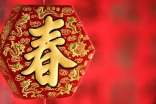- 相关推荐
简单好看的春节英语手抄报素材
在日常学习和工作中,大家都看到过令自己印象深刻的手抄报吧,借助手抄报可以培养我们动手、动脑的习惯。什么样的手抄报才经典呢?下面是小编为大家整理的简单好看的春节英语手抄报素材,欢迎阅读,希望大家能够喜欢。

春节英语祝福语
1、Wishing you peace,joy and happiness through the coming year.在新年来临之际,祝福你平安快乐幸福!
2、Wish you every success.一帆风顺。
3、Peace and love for you at New Year from all your students.祝老师新年充满平安和爱。
4、New Years Festival blessings,family reunion,happiness,health and happiness,happy mood,many friends. 新春佳节祝福多,合家团圆幸福多;身体健康快乐多,心情愉快朋友多。
5、With very best wishes for your happiness in the New Year. 致以最良好的祝福,原你新年快乐幸福。
6、Rich blessings for health and longevity is my special wish for you in the coming year.祝你在新的一年里身体健康,多福多寿。
7、I give all my love to you this New year.值此佳节,献上我对你所有的爱。
8、Please accept my sincere wishes for the New Year
9、"Own" believe "own" forever,will be more successful!“自己”永远相信“自己”,一定会取得更大的成功!
10、May everything beautiful and best be condensed into this card. I sincerely wish you happiness,cheerfulness and success.愿一切最美好的祝福都能用这张贺卡表达,真诚地愿你幸福、快乐、成功!
春节英语作文
The Chinese Spring Festival comes on the first day of the Chinese Lunar Year, which is usually in February. There is a name for each year, such as the dog, the monkey, the tiger or one of the twelve animals, and this year is the year of the horse.
Before the New Year’s Day, the Chinese people usually give their houses a good cleaning and on the last evening of the old year, all the members of a family will get together and have a big meal. On the first or second day of the new year, people usually go to visit their relatives and friends and give some lucky money to children.
I wish you have a good time during the Spring Festival.
中国的春节是在中国农历的第一天,通常是在二月。每年都有一个名字,比如狗、猴子、老虎或十二生肖中的一种,今年是马年。
在新年到来之前,中国人通常会给他们的房子做个大扫除,在旧年的最后一个晚上,所有的家庭成员都会聚在一起吃一顿大餐。在新年的第一天或第二天,人们通常会去拜访亲戚朋友,给孩子们一些幸运的钱。
祝你在春节期间过得愉快。
春节的传说
万年创历法的传说
相传古时候,有个名叫万年的青年,看到当时节令很乱,就有了想把节令定准的打算。但是苦于找不到计算时间的方法,一天,他上山砍柴累了,坐在树阴下休息,树影的移动启发了他,他设计了一个测日影计天时的晷仪,测定一天的时间。后来,山崖上的滴泉启发了他的灵感,他又动手做了一个五层漏壶,来计算时间。天长日久,他发现每隔三百六十多天,四季就轮回一次,天时的长短就重复一遍。
当时的国君叫祖乙,也常为天气风云的不测感到苦恼。万年知道后,就带着日晷和漏壶去国君,对祖乙讲清了日月运行的道理。祖乙听后大悦,感到有道理。于是把万年留下,在天坛前修建日月阁,筑起日晷台和漏壶亭。并且希望能够测准日月规律,推算出准确的晨夕时间,创建历法,为天下的黎民百姓造福。
有一次,祖乙去了解万年测试历法的进展情况。当他登上日月坛的时候,看见天坛边的石壁上刻着一首诗:“日出日落三百六,周而复始从头来。草木枯荣分四时,一岁月有十二圆。”知道万年创建历法已成,亲自登上日月阁看望万年。万年指着天象,对祖乙说:“现在正是十二个月满,旧岁已完,新春复始,祈请国君定个节吧”。祖乙说:“春为岁首,就叫春节吧”。据说这就是春节的来历。
冬去春来,年复一年,万年经过长期观察,精心推算,制定出了准确的太阳历,当他把太阳历呈奉给继任的国君的时候,已是满面银须。国君深为感动,为纪念万年的功绩,便将太阳历命名为“万年历”,封万年为日月寿星。以后,人们在过年时挂上寿星图,据说就是为了纪念德高望重的万年。为纪念他,就把初一定为“年”。
The legend of creating a calendar for thousands of years
According to legend, in ancient times, there was a young man named Wan Nian who saw that the festivals were very chaotic at that time, so he had a plan to set the festivals accurately. But struggling to find a way to calculate time, one day he was tired from chopping firewood up the mountain and sitting under the shade of a tree to rest. The movement of the tree shadow inspired him, and he designed a sundial to measure the time of the day. Later, the dripping spring on the cliff inspired him, and he made a five story leaky pot to calculate time. Over time, he discovered that every 360 or so days, the four seasons cycle and the duration of the day repeats itself.
At that time, the rulers name was Zuyi, and he often felt distressed by the unpredictable weather. After knowing it for thousands of years, he took a sundial and a teapot to the ruler and explained to Zu Yi the principles of the movement of the sun and moon. Upon hearing this, Zu Yi was greatly pleased and felt that it made sense. So he left behind ten thousand years and built the Sun and Moon Pavilion in front of the Temple of Heaven, as well as a sundial platform and a leaking pot pavilion. And I hope to accurately measure the laws of the sun and moon, calculate the exact morning and evening time, create a calendar, and benefit the people of the world.
Once, Zuyi went to learn about the progress of the Ten Thousand Year Test Calendar. When he climbed onto the Sun and Moon Altar, he saw a poem engraved on the stone wall next to the Temple of Heaven: "The sun rises and sets three hundred and six times, starting from scratch. The grass and trees wither and flourish in four seasons, and a year has twelve circles." Knowing that the creation of the calendar for ten thousand years had been completed, he personally climbed to the Sun and Moon Pavilion to visit ten thousand years. Wan Nian pointed to the celestial phenomena and said to Zu Yi, "Now it is twelve months old, the old year is over, and the new year is beginning again. I pray to the ruler to set a festival.". Zu Yi said, "Spring is the beginning of the year, lets call it Spring Festival.". It is said that this is the origin of the Spring Festival.
Winter has passed and spring has arrived, year after year. Through long-term observation and careful calculation, an accurate solar calendar has been formulated. When he presented the solar calendar to his successor, it was already covered in silver whiskers. The monarch was deeply moved and named the solar calendar "Eternal Calendar" to commemorate the achievements of ten thousand years, and conferred the title of "Sun, Moon, and Longevity Star" on ten thousand years. In the future, people will hang longevity charts during the Chinese New Year, which are said to be in memory of the esteemed 10000 years. To commemorate him, the beginning is designated as the year.
【简单好看的春节英语手抄报素材】相关文章:
英语手抄报边框素材简单又好看07-19
英语手抄报内容素材简单又好看07-19
英语手抄报图片素材简单又好看03-27
简单又好看英语手抄报图片素材07-19
简单好看的手抄报边框素材07-13
简单又好看的手抄报素材图片大全07-14
简单好看的春天手抄报内容素材07-20
简单好看的动物手抄报内容素材07-20
好看简单的读书手抄报边框素材07-21
简单好看的数学手抄报边框素材10-02